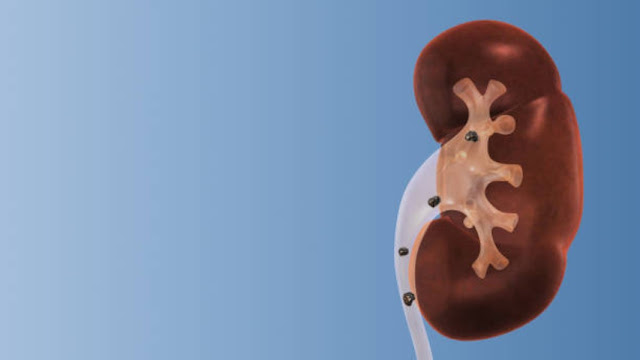Revolutionizing Healthcare at Home

Telehomecare Technology: Revolutionizing Healthcare at Home
Introduction:
Telehomecare technology has emerged as a groundbreaking
solution to provide healthcare services remotely, enabling patients to receive
medical care and monitoring from their homes. Leveraging advancements in
telecommunication, information technology, and medical devices, telehomecare
technology enables healthcare professionals to remotely monitor patients,
deliver personalized care, and manage chronic conditions. This article will
explore the concepts, applications, benefits, and challenges of telehomecare
technology, highlighting its potential to revolutionize healthcare delivery and
improve patient outcomes.
Understanding Telehomecare Technology:
a. Remote Patient Monitoring: Telehomecare technology
enables the remote monitoring of patient's vital signs, symptoms, and health
conditions. Connected medical devices, wearable sensors, and mobile apps allow
healthcare providers to collect real-time data, track patients' health status,
and detect abnormalities or changes. This real-time monitoring enhances early
intervention, reduces hospital readmissions, and improves patient outcomes.
b. Virtual Consultations and Telemedicine: Telehomecare
facilitates virtual consultations between patients and healthcare providers,
enabling remote medical assessments, diagnosis, and treatment. Through video
calls, patients can communicate with healthcare professionals, discuss
symptoms, receive medical advice, and discuss treatment plans. Telemedicine
provides convenience, eliminates travel burdens, and enhances access to
healthcare services, particularly for individuals in rural or remote areas.
c. Medication Management: Telehomecare technology supports
medication management by providing reminders, tracking adherence, and enabling
remote medication reviews. Through mobile apps or smart devices, patients can
receive medication reminders, access dosage instructions, and record their
medication intake. Healthcare providers can remotely review patients'
medication history and provide necessary guidance.
d. Health Education and Self-Management: Telehomecare
technology offers health education resources and self-management tools to
empower patients in managing their health conditions. Patients can access
educational materials, receive personalized recommendations, and learn
self-care techniques. This knowledge empowers patients to actively participate
in their healthcare, leading to improved health outcomes and better
self-management.
Applications and Benefits of Telehomecare Technology:
a. Chronic Disease Management: Telehomecare technology is
crucial in managing chronic illnesses such as diabetes, hypertension, and heart
disease. Remote patient monitoring and virtual consultations allow healthcare
providers to track patients' vital signs, assess disease progression, and
adjust treatment plans accordingly. Patients can receive timely interventions,
self-manage their conditions, and reduce the need for frequent hospital visits.
b. Post-Discharge Care: Telehomecare technology supports post-discharge care by providing remote monitoring and follow-up care. Patients recovering from surgeries or hospital stays can be monitored remotely, ensuring proper recovery, identifying complications early, and minimizing hospital readmissions. Telehomecare technology improves care continuity and enhances patient satisfaction.
c. Aging Population and Elderly Care: With the aging
population, telehomecare technology addresses the challenges of providing
healthcare to elderly individuals. Remote monitoring and virtual consultations
enable healthcare professionals to monitor vital signs, detect falls or
emergencies, and provide timely assistance. Telehomecare technology promotes
aging in place, reduces healthcare costs, and improves the quality of life for
older adults.
d. Mental Health Support: Telehomecare technology extends
its benefits to mental health services, facilitating remote therapy sessions
and counseling. Patients can access mental health professionals through video
calls or mobile apps, eliminating geographical barriers and reducing the stigma
of seeking mental health support. Telehomecare technology increases access to
mental health services and improves mental health outcomes.
e. Rural and Underserved Areas: Telehomecare technology
addresses individuals' healthcare disparities in rural and underserved areas.
By eliminating the need for travel and providing remote access to healthcare
services, telehomecare technology improves healthcare access, reduces
healthcare costs, and enhances health outcomes for these populations.
Conclusion:
Telehomecare technology revolutionizes healthcare delivery
by directly bringing medical care and monitoring to patients' homes. Through
remote patient monitoring, virtual consultations, and self-management tools,
telehomecare technology improves access to healthcare, enhances patient
engagement, and empowers individuals to manage their health conditions actively.
The application of telehomecare technology in chronic disease management,
post-discharge care, elderly care, mental health support, and underserved areas
demonstrates its potential to transform healthcare outcomes. However,
addressing challenges related to technology accessibility, data privacy,
regulatory frameworks, and healthcare system integration is crucial for the
successful implementation and widespread adoption of telehomecare technology.
With continued advancements and collaboration between healthcare providers,
technology developers, and policymakers, telehomecare technology can shape the
future of healthcare, enabling personalized, efficient, and patient-centered
care.

Comments
Post a Comment